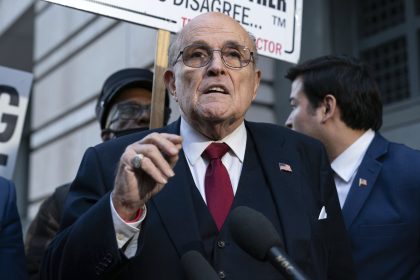Ohio Supreme Court Orders Ballot Measure Rewrite

COLUMBUS, Ohio — The Ohio Supreme Court on Monday ordered Secretary of State Frank LaRose and the Ohio Ballot Board to rewrite sections of a ballot measure that would make it harder for voters to amend the state constitution.
The decision came in response to a complaint filed last month by a group of Ohio voters and an organization called One Person One Vote, that challenged the ballot language.
Senate Joint Resolution 2, as the measure is known, proposes a change to the Ohio Constitution that would increase the threshold to pass constitutional amendments from 50% to 60%.
The proposal would also impose new rules for petitions for citizen-led amendments, including eliminating a 10-day period during which citizens could file supplemental signatures if the state determined that there was a deficiency after the petition was submitted.
In addition, the amendment would double the number of counties from which signatures would have to be collected.
According to the petitioners, the state’s Republican lawmakers compounded the situation by proposing amendment language that “misleadingly” favors its adoption.
They also contend that the ballot’s title, “Elevating the standards to qualify for and to pass any constitutional amendment,” is just plain inaccurate.
In its order, the Ohio Supreme Court held “Secretary LaRose’s use of the word ‘any’ in the title here is likely to mislead voters.
“The title could give voters the false impression that the proposed amendment would make it more difficult to qualify all proposed constitutional amendments for the ballot, regardless of how they are presented,” the court said.
But in a concurring opinion in which she dissented in part, Justice Jennifer Brunner argued that statement did not go far enough.
“To comply with the Ohio Constitution, the ballot language must more clearly explain these differences so that voters are aware of the inequalities that would be created between the ability of voters to put a proposed amendment on the ballot through the initiative process and the ability of the General Assembly to autonomously do so,” she wrote.
The petitioners also claimed that the use of the word “elevating” in the title was not “impartial and will create prejudice in favor of the amendment,” but that assertion was rejected by a majority of the justices who chose to leave the word “elevating” in the ballot title.
When it came to the ballot language, the Ohio Supreme Court sided with the petitioners, agreeing that the “ballot language does not accurately describe the number of elector signatures required from each county” and currently “overstates the number of signatures that would be needed to qualify an initiative petition for the ballot.”
“Because not all electors vote in a gubernatorial election, the ballot language here overstates the number of signatures that would be needed to qualify an initiative petition for the ballot,” the court said.
Further, “The ballot board concedes that this ballot language does not accurately describe the number of elector signatures required from each county.
“In the absence of any dispute about the inaccuracy of this language, we grant a writ of mandamus ordering the ballot board to adopt lawful ballot language that accurately characterizes and explains the definition of ‘electors’ underlying the petition-signature requirements in the proposed amendment, including how many signatures would be required to qualify an initiative petition for the ballot,” the justices said.
One Person One Vote also has a second complaint before the Ohio Supreme Court, challenging LaRose’s decision to hold a special election on the ballot proposal on Aug. 8.
According to the group, it is a violation of state law to hold a statewide election in Ohio during August.
Dan can be reached at [email protected] and at https://twitter.com/DanMcCue
























